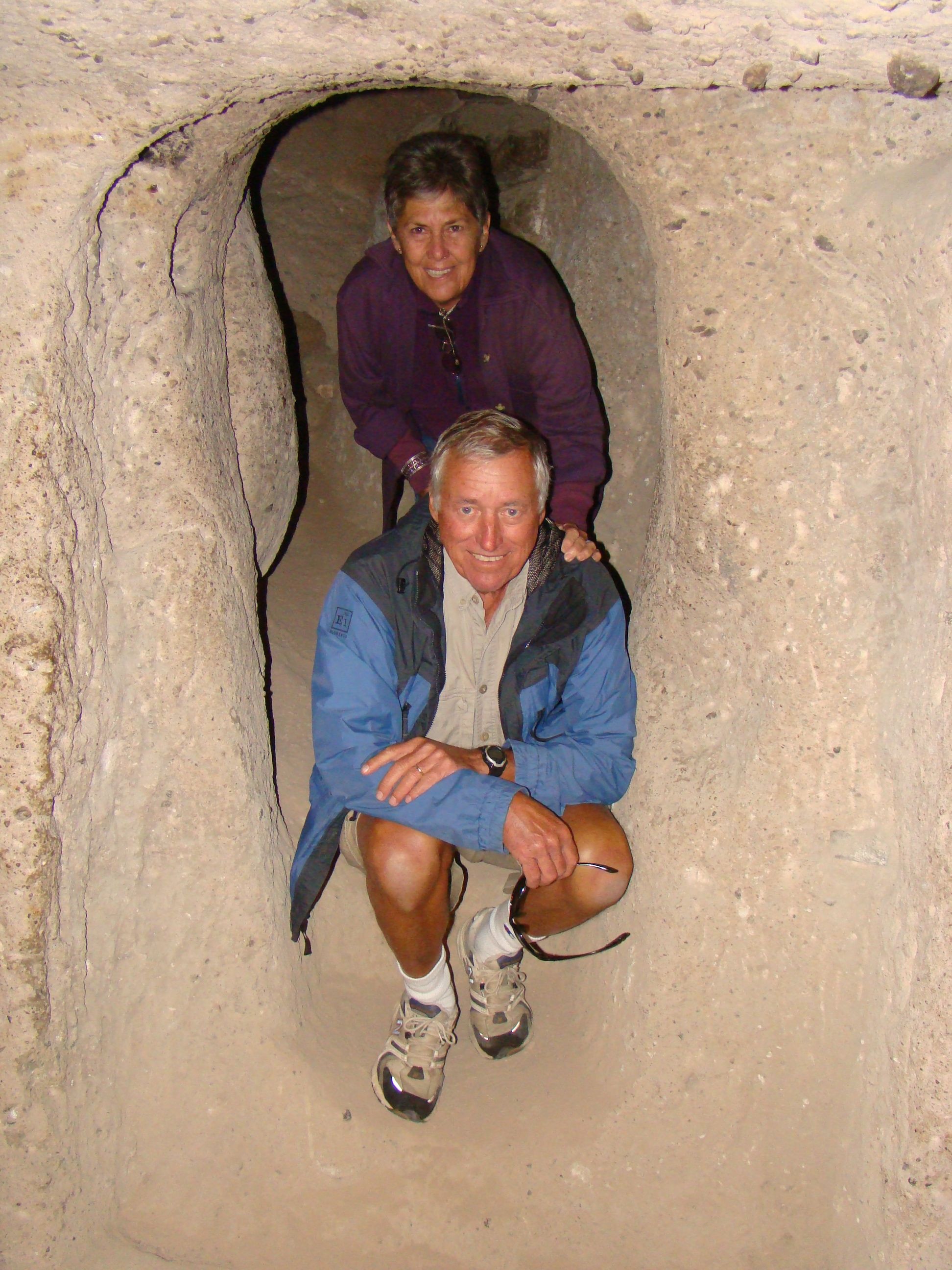Ephesus may be the pearl of ancient ruins in the eastern Mediterranean, but it is not alone. In the Cappadocia area there are estimated to be from forty to over two hundred underground communities. A few that have been excavated range from two to eleven stories down. There is some debate about when they were first built and by whom: possibly the Phrygians in the eighth to seventh centuries BCE or by the Persians in the fifth to fourth centuries BCE for refugees. The first known written notation about them is in Xenophon’s Anabasis, written after his expedition with Cyrus in 401 BCE. Whoever envisioned them, it was a masterful troglodyte brain at work. Some are, indeed, cities. The largest known to date could accommodate up to fifty thousand people. We saw complex systems for ventilation, water, and septic as we made our way single file through the narrow carved walkways. There were stables, wineries, oil presses, storage rooms, schoolrooms, religious chapels, as well as family apartments. Particularly interesting to me were the clever, huge rolling-stone-on-tracks system for closing off entrances to the upper world.”

My husband, Wayne, and me in a Cappadocia underground city hallway.
“For me, living in the environment of the sea, now stooping, slumping, and shuffling through the light brown stone passages of one of these underground cities with a roof of thousands of tons of heavy stone—while fascinating strictly as an observer—would have been horrifying to live under. I tried to imagine not seeing the sun for days on end and breathing this underground, dirt-rock mustiness, but that only made me want to claw my way out quickly. However, what was on the surface—perhaps an enemy with bow and arrow or mace-like club—might have given me second thoughts. These underground cities were used when the above-ground habitations were under siege.” [Excerpts from Voice of a Voyage]